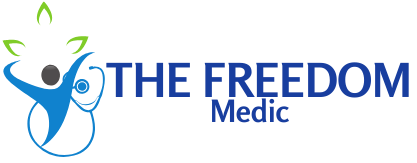Setrenghtening your ability to set clear and achievable goals is crucial, especially when the environment around you is uncertain and vague. Uncertainty can often lead to indecision and lack of direction, making it challenging to stay focused and determined. However, by following a few key strategies, you can effectively define and reach your goals, even in the midst of a vague environment. In this blog post, we will explore the importance of goal-setting, and provide you with actionable steps to establish clear objectives and make meaningful progress, regardless of the circumstances.
Understanding a Vague Environment
To set clear goals in a vague environment, it’s crucial to first understand the nature of the environment you are working in. Vagueness refers to situations where there is a lack of clear information or uncertainty about the variables involved. This could be due to numerous factors such as incomplete data, conflicting information, or rapidly changing conditions. In such an environment, setting and achieving goals can be challenging, but not impossible. Understanding the characteristics of vagueness and how to navigate uncertainty will help you set clear and achievable goals.
Characteristics of Vagueness
Characteristics of vagueness include ambiguity, lack of specificity, and unpredictable outcomes. In a vague environment, it’s often difficult to define clear parameters or measure progress due to the uncertain nature of the variables involved. This can lead to frustration and a sense of lack of control. However, recognizing and acknowledging these characteristics is the first step in learning how to effectively navigate and overcome them.
Navigating Uncertainty
When navigating uncertainty, it’s important to embrace flexibility and adaptability. Accept that not everything will go as planned and that unforeseen obstacles may arise. Developing a mindset that embraces change and can adjust to new information will be essential in setting clear goals in a vague environment. It’s also important to seek out diverse perspectives and collaborate with others, as this can help provide a more comprehensive understanding of the situation and potential solutions.
Principles of Clear Goal-Setting
Some people may argue that setting clear goals in a vague environment is a futile exercise. However, the reality is that in uncertain and ambiguous situations, having clear goals becomes even more critical. Clear goals provide direction, motivation, and a sense of purpose, helping you navigate through the uncertainty and make progress. In her article Defending Vague Goals · – Sara Kurth, Sara Kurth argues that vague or unclear goals can lead to frustration and lack of progress.
Defining Clear and Measurable Goals
When setting goals in a vague environment, it’s essential to define them clearly and make them measurable. Clear goals are specific and unambiguous, leaving no room for interpretation. They answer the questions of what, why, and how, giving you a precise understanding of what you want to achieve and why it’s important. Measurable goals, on the other hand, allow you to track your progress and evaluate your success. By establishing clear and measurable goals, you eliminate confusion and create a roadmap for your actions.
The SMART Framework
The SMART framework is a useful tool for setting clear goals in a vague environment. SMART stands for Specific, Measurable, Achievable, Relevant, and Time-bound. Your goals should be specific and clearly defined, measurable to track progress, achievable within your capabilities, relevant to your overall objectives, and time-bound with a deadline for completion. By applying the SMART criteria to your goal-setting process, you can ensure that your goals are well-defined and actionable.
Strategies for Goal-Setting in Ambiguity
For effective goal-setting in a vague environment, it’s crucial to have strategies in place that allow you to navigate ambiguity and set clear objectives. One useful resource is The Importance of Clarifying Goals with Your Manager, which emphasizes the significance of aligning your goals with those of your manager to ensure coherence and direction.
Incremental Goal-Setting
When facing ambiguity, incremental goal-setting can be a valuable approach. By breaking down larger, vague objectives into smaller, achievable milestones, you can create a clear path forward. This strategy allows you to make progress in manageable steps, while also providing you with tangible achievements along the way. It’s important to celebrate these incremental successes to maintain motivation and momentum in an uncertain environment.
Adaptive Planning and Review Cycles
Another effective strategy for goal-setting in ambiguity is to embrace adaptive planning and regular review cycles. In this approach, you acknowledge that the environment is fluid and ever-changing, and you plan accordingly. By regularly reviewing your goals and adjusting them based on new information or shifts in circumstances, you maintain flexibility and responsiveness. This ensures that your objectives remain relevant and achievable, even in the face of uncertainty.

Tools and Techniques
Unlike traditional goal-setting methods, setting clear goals in a vague environment requires specific tools and techniques to help you navigate the uncertainties. One valuable resource is the article The Clear-path Goals vs. Vague-path Goals and the Secrets to Reaching Both, which provides insights into this approach.
Vision Boards and Mind Maps
One powerful tool to help you set clear goals in a vague environment is the use of vision boards and mind maps. Vision boards are visual representations of your goals, aspirations, and the steps you need to take to achieve them. By creating a vision board, you can visually organize your thoughts and aspirations, making it easier to keep track of your goals. Mind maps, on the other hand, are a structured diagram that visually represents your ideas and concepts. By using mind maps, you can organize your thoughts more effectively and gain a clearer understanding of your goals and how to achieve them.
Leveraging Feedback Loops
Another technique that can help you set clear goals in a vague environment is leveraging feedback loops. Feedback loops can provide you with valuable real-time information on your progress, enabling you to make real-time adjustments to your goals and strategies. By actively seeking and utilizing feedback, you can continuously refine your goals and stay on track towards achieving them.
Conclusion: How to Set Clear Goals in a Vague Environment
Presently, you now have the tools and strategies to set clear and achievable goals, even in a vague environment. By breaking down your overarching goals into smaller, more manageable tasks, creating a timeline for completion, and staying adaptable and flexible in your approach, you can navigate through uncertainty and set yourself up for success. Remember to stay focused on your end goal, communicate effectively with your team or support system, and celebrate your progress along the way. With these skills in your toolkit, you can confidently tackle any goal, regardless of how ambiguous the environment may be.


